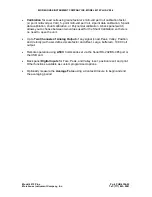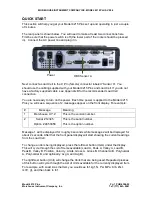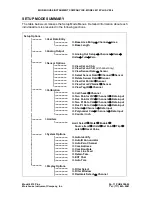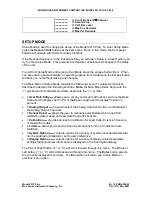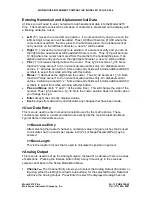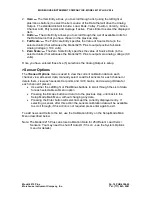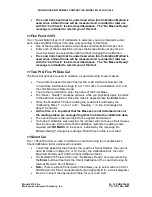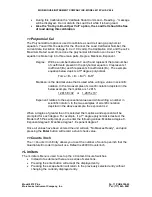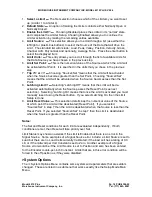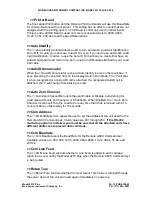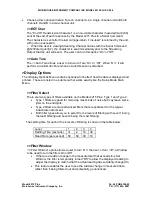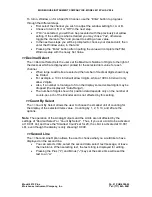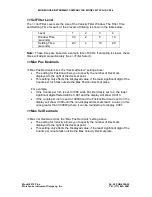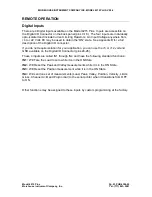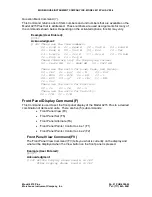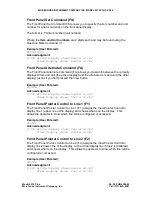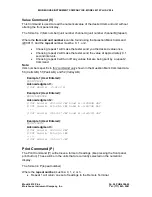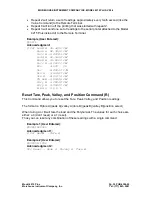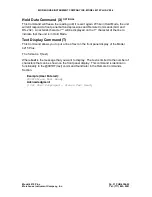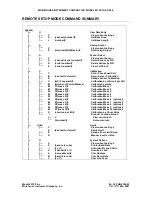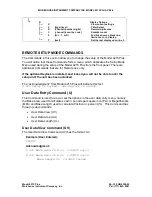
MOREHOUSE INSTRUMENT COMPANY INC. MODEL 4215 PLUS V5.0.6
Model 4215 Plus
Pg. 20 PUB.6396-02
Morehouse Instrument Company, Inc.
Tel: (717) 843–0081
•
Choosing this option will retain Tare on channel A in a single channel unit and both
channels A and B in a two-channel unit.
>>EOT Char
The “End Of Transmission Character” is a non-visible character (hexadecimal 0x04)
sent at the end of each response by the Model 4215 Plus to a Serial Command.
The character is sent after the last carriage-return “Line-feed” is returned by the unit,
with just one exception:
• When the user is viewing Streaming Channel Values with the Serial Command
@123V(item)(unit)(2), the character is sent immediately prior to the Streaming
Output that the unit will send. The user can turn this option “On” or “Off”.
>>Auto Tare
The >>Auto Tare allows a user to turn Auto Tare “On” or “Off”. When “On”, it will
perform an Automatic Tare when an AutoID sensor is attached.
>Display Options
The >Display Options Menu contains options which effect how the data is displayed and
printed. These are listed in a submenu that works exactly like the Setup Mode Main
Menu.
>>Filter Select
There are two types of filters available on the Model 4215 Plus: Type 1 and Type 2.
•
Type 1 filters are good for removing most kinds of noise but may leave some
jitter on the end digits.
•
Type 2 filters are more advanced filters that are optimized for the typical
industrial environment.
•
Both filter types allow you to select from 4 levels of filtering with Level 1 being
the least filtering and Level 4 being the most filtering.
The settling time for each of the 4 levels of filtering is shown in the table below:
Level
1
2
3
4
Settling Time (seconds) <1
2
10 30
Read Rate (per second) 60
60 30 10
>>Filter Window
“<<Filter Window” option allows a user to turn “On” then set, or turn “off”, a Window
to be used to turn the filters On or Off.
•
If there is a sudden change in the measurement that exceeds this Set
Window, the filter is temporarily turned “Off” to allow the displayed reading to
adjust the display to match what the actual reading has suddenly changed to.
•
This feature enables the user to see the sudden change in measured data
rather than it being filtered out and potentially go unnoticed.

